Green roses: features and description of varieties
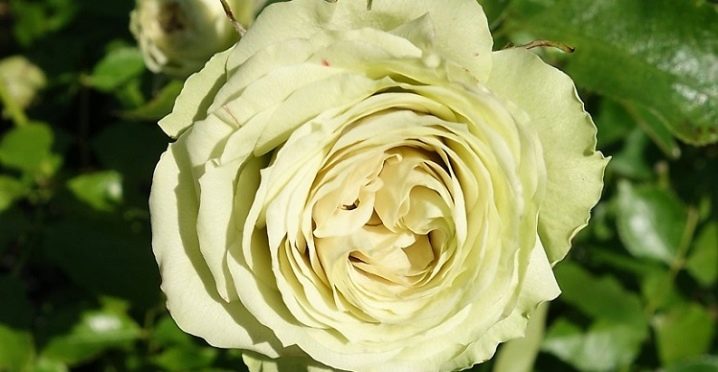
Breeding science does not stand still and creates new varieties and varieties of various crops. One of these unique wonders of breeding is the green rose.
Types, varieties and their description
Over the centuries, the rose underwent numerous changes, both natural and due to the participation of people, until it acquired harmony in the form of buds, outlines of delicate petals and various shades of color. The appearance of a green rose was facilitated by chance - it was not taken out purposefully.
At the end of the 18th century, a botanist from Holland A. Mayer, who experimented with roses, implanted a stalk of a white rose on a wild thorn stump. After a while, a rose bloomed on it with peculiar green petals. So the stereotype about what color a rose should be was destroyed. But the lack of aroma was the lack of a green bud, distinguishing it from the usual colors.
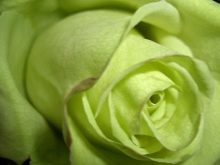


Further selection was aimed at forming an ideal petal silhouette and various combinations of green and other colors in the flower. As a result, many original types of this rose appeared, differing in different saturation of greens with shades of flowers: white-green, pink-green, yellow-green and red with a green core.
Types of green roses.
- Hybrid tea. They were obtained by hybridizing tea and remontant varieties. This type is very popular and is used to form flower beds, flower beds. A distinctive feature of this type of roses is continuous flowering throughout the summer. They are represented by such varieties as "Super Green", "Mythos", "St. Patrick s day ”,“ Misteli ”.
- Climbers (climbing). It is a hybrid of climbing, hybrid tea, tea, remontant varieties and floribund species. This variety decorates gazebos and verandas, balconies and walls of buildings, various fences and hedges. Varieties - "Elfe", "Aelita".
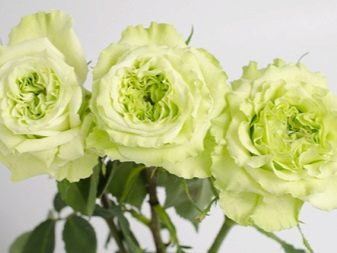
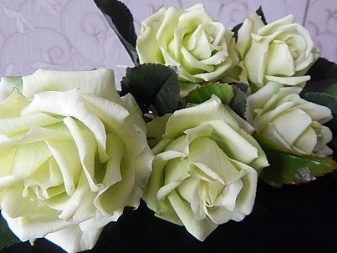
- Miniature roses. They appeared in Europe at the beginning of the 19th century. And after that, Spanish, Dutch and American breeders created new varieties of these small flowers. They are widely used in the creation of borders, flower beds, flower beds and are successfully grown indoors. Presented by the varieties "Green Eyes", "Green Diamond", "Green Ice Min".
- Floribunda roses (blooming profusely) are the result of hybridization of tea-hybrid, nutmeg, polyanthus. They are distinguished by the duration of flowering, resistance to cold and infections. Floribunda roses are unpretentious in cultivation, and large flowers give them an elegant decorative look. These are Greensleeves, Sheila Mac Queen, Jade, Lovely Green.
- American breeders have also contributed to the development of new varieties of green roses. As a source material, they used not only the latest, but also old varieties of garden roses. Flowers of this species have the following characteristics: they grow quickly and have a strong stem, they tolerate cold well, are immune to diseases and harmful insects, and bloom for a long time and profusely. Varieties - Green Tea, Lemonade, Wimbeldon.
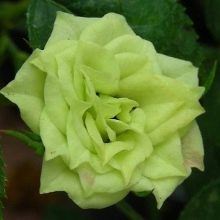

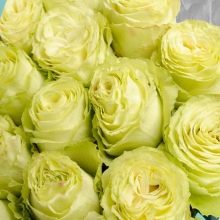
Of the listed varieties and varieties, the following are most popular.
- Green Tea. This variety is intended for cutting. The rosebud has the shape of a glass, reaches a size of 7 cm and consists of 25-30 petals of a pale green hue. The petals are rounded, their wavy edges give the rose a double look. A blossoming bud, in its shape, resembles a deep bowl up to 10 cm in diameter.The stem of the rose is straight, reaching 90 cm in height, with a few thorns. Large dark green shiny leaves set off delicate light green petals.
Roses are able to stay fresh after cutting and stay fresh for almost two weeks. The rose bush is highly resistant to infections.
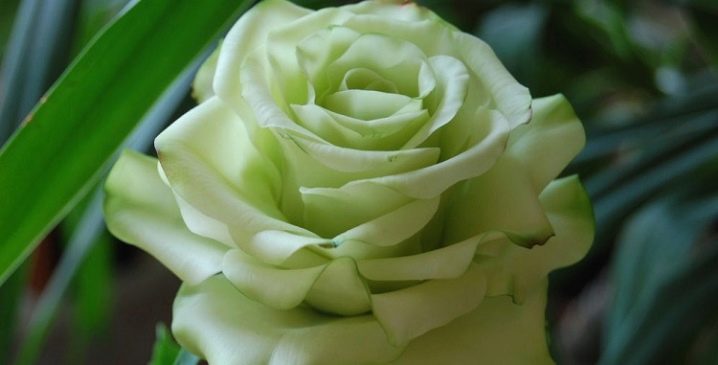
- Green Ice. A miniature lush rosebush of this variety, it is characterized by a long flowering period and an abundance of buds. The closed pink-green buds gradually lose their original pink hue during the blooming process, and the beautiful shaggy winding petals turn into white-green. Since the rose bush reaches a small height (about 0.5 m), it is often used to form borders.
- "Limbo". The characteristic features of the variety are the absence of thorns on the stems, the compactness of the bush (height 50-80 cm and width about 50 cm), immunity to black spot and powdery mildew. The leaves are quite large and shiny, and the green-yellow flowers have a faint scent. The unblown buds have a conical shape, but gradually opening 47 petals turn them into a wide (up to 9 cm) cup. At the edges, the petals have an openwork border.

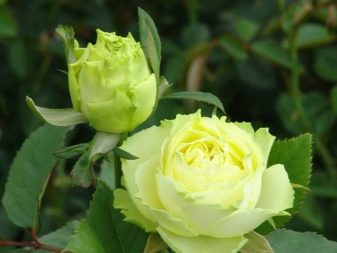
- Red Eye. The original combination of deep red and dark green colors make this scarlet rose with a green heart unique. The flower is lush, double, flattened in shape, it is almost a regular circle. The lower rich red petals of small buds (about 5 cm) lushly border the bright green middle of the densely and tightly-seated petals. The stem of this rose is medium - 50-60 cm, and the bush itself is low - 40-50 cm. It is indispensable for decorating alpine hills, decorating borders.
- "Elfe". This climbing peony rose strikes with large (about 14 cm) fluffy flowers of white-green color. Numerous buds form and blossom on long stems throughout the season. There are so many of them that without supports, its stems, heavy from flowers, bend to the ground. Each bud contains about 57 petals. Their color imperceptibly goes from an ivory shade at the top to a light green with a lemon tint at the base. Long stems must be pointed upwards.
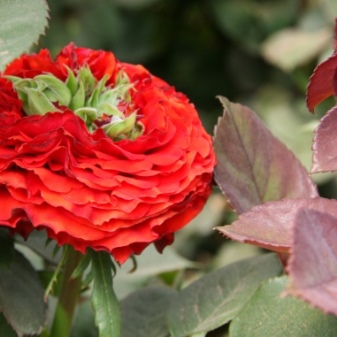

- "Wimbeldon". The rose bush stands out for its height (up to 1 m) and sparse thorns on long stems. The delicate greenish color of the petals has a different saturation: the light green color imperceptibly becomes pale green with a slight lemon tint. The center of the dense bud is highlighted with a bright burgundy border along the wavy edge of the petals. The variety tolerates temperature fluctuations well.
- "Helena". This is a variety of Russian selection. It cannot be attributed to true green roses. Its rounded buds, pointed upwards, hide the delicate yellow petals. After opening, green stripes appear on the lower petals, which makes the rose unusually beautiful. The bushes are tall - up to 1.5 m and wide - up to 0.9 m. The variety is characterized by long flowering.
In addition to those listed, there are many other equally popular varieties - "Super Green", "St Patrick s Day", "Carlsbad", "Gloria Dei", "Green Rose", "Lemonade", "Green Diamond" and others.
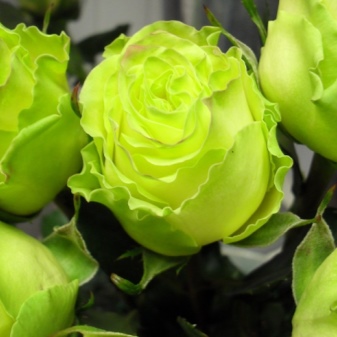
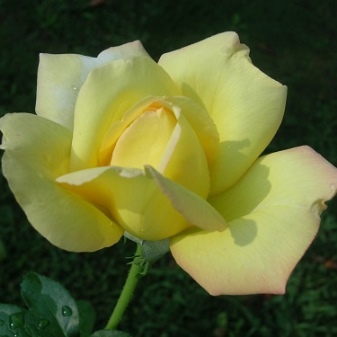
Landing
Growing this unique but finicky flower will require a lot of work, knowledge and skills. First of all, the quality of the seedlings plays an important role, therefore, it is advisable to purchase them in nurseries and not subject them to long transportation and storage. This will negatively affect the survival rate of rose bushes. It is recommended to choose seedlings of zoned varieties, otherwise the heat-loving plant will die. Preference should be given to seedlings with strong and living roots, without signs of disease, damage, decay.
The choice of the landing site is also important. This rose loves the abundance of the sun's warmth. Does not tolerate through winds and grows poorly in low-lying cool and humid areas. A sunny, preferably southern section, closed from the north wind, is perfect.

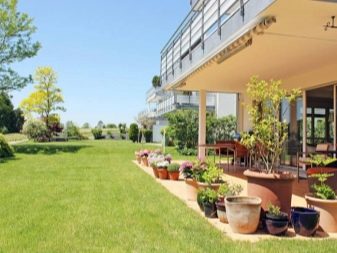
For good growth of a green rose, a loose, slightly acidic fertile soil is recommended. Sand should be added to clay soil, and garden soil and organic matter in equal amounts to sandy soil. In any type of soil, humus (humus) and compost must be introduced in advance. It is also useful to add superphosphate, nitrophoska, ash or complex fertilizers. In the regions of the middle zone of our country, the best time for disembarkation is spring and early autumn. This is most often the second half of April until the end of May. An important condition must be observed - the earth must be warmed up to at least +12 degrees and warm weather must be established. For the southern regions, spring planting is not recommended, since the summer heat has a detrimental effect on young bushes.
In autumn, roses are planted from mid-September to early October. Such planting dates ensure that the bushes will take root and take root before frost, and the buds on the stems will not develop. Before the onset of cold weather, young pink seedlings need to be insulated with some covering material. Correct planting plays an important role in the subsequent development of the green rose.

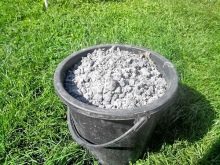
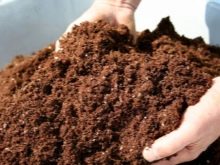
Planting rules.
- In advance (one to two weeks), dig a hole of such a size that the roots of the seedling fit freely in it. Usually its size is 0.6x0.6m with a depth of 0.7m. The top most fertile layer of earth must be carefully removed.
- Drainage from rubble, gravel or any pebbles is laid out on the bottom.
- Then the drainage is covered with a small layer of soil mixture with complex fertilizers. The following composition is possible: dolomite flour (2 glasses), superphosphate (2 handfuls), ground clay, peat (in a bucket), garden soil and bone meal (2 buckets each). A 0.4 m hole is filled with this composition.
- Pour plenty of water over the hole.
- Dip the roots into it and gently spread them, and then cover them with the top layer of the removed earth and compact the soil.


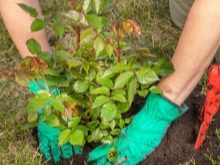
There is also a more complex method for planting a green rose: preliminary planting in a container. It is selected taking into account the size of the seedling roots and must have holes. It is filled with potting soil. Further planting is done as follows: the container is placed in a previously prepared hole, covered with soil and watered well.
When planting different types of green roses, you need to observe the gaps between the bushes. Shrub roses are planted with a distance of 1.5-3 m, undersized roses - every 0.4-0.6 m, curly - with an interval of 2-3 m, and flower beds - every 0.3-0.6 m.

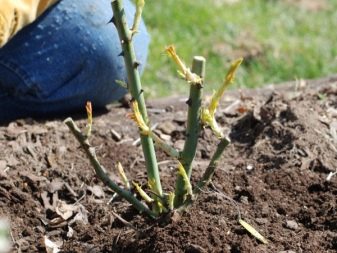
Care rules
Properly organized care promotes good growth and abundant flowering of the green rose, which implies compliance with some rules.
- Watering should be systematic and abundant. But an excess of moisture must not be allowed, which leads to rotting of the roots and further death of the plant. You should regularly check the moisture content of the soil under the bush and water it as needed.
- Watering should be accompanied by loosening the soil under the bush. This should be done after all the water has been absorbed. Weeds are removed at the same time. Mulching the soil near the bush not only retains moisture, but also inhibits the growth of weeds.
- The plant is fed every 2 weeks. Fertilization begins 14 days after planting the seedling. They also use organic matter that improves the growth of green mass (this is especially necessary in spring) and mineral fertilizers that support abundant flowering and form resistance to cold (they are applied in summer and autumn).
- A systematic inspection of the bush allows you to timely detect a disease or the presence of pests and start combating them.
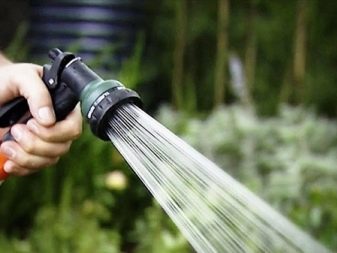
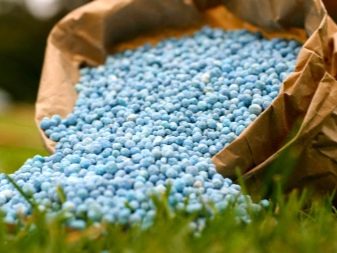
- It is necessary to carry out an annual sanitary pruning of the bush - cut off outdated, dry and with signs of disease stems, as well as form a bush - remove unnecessary shoots that interfere with other branches.
- It is important to prepare roses for winter in time. Peat mulch and humus are often used to cover the shrub. The use of other insulating material is also permissible.
- In the spring, at the first heat, the insulation is removed, as it can lead to decay of the roots. The shelter can be left until the onset of stable heat, but then you need to do regular ventilation of the roots.
- After the final removal of the shelter, the bush must be sprayed with copper sulfate for disinfection.
Correct neighborhood with other crops also has a beneficial effect on the growth of the rose. The green beauty can be combined in the garden with other flowering plants - bell and sage, foxglove and lobelia, thyme and lavender, oregano, carnation and viola, perennial berry bushes. Dahlias and gladioli have an overwhelming effect on the rose, so their neighborhood is undesirable.

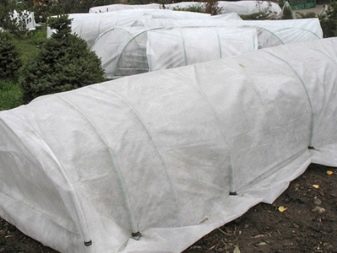
Diseases and pests
Harmful insects can appear on the rosebush during the formation of buds and leaves. They destroy future flowers and spoil the beauty of the whole plant. Most often, a green rose is affected by pests:
- the caterpillar of the rose sawfly, which sucks out the juice of the foliage, impairing the metabolic processes in the bush;
- ants that feed on aphids;
- slobbering penny, located on the inner surface of the leaf and drawing the juice from the plant, poisoning it with foam;
- leafroller, which appears at the initial stage of maturation of the stems and remains there until the end of summer.
Each harmful insect needs to be dealt with in its own way: slobbering pennies and leaf rollers are collected by hand and destroyed, insecticidal preparations are effective in killing aphids and ants, and caterpillars can be harvested by hand or sprayed with pesticides.

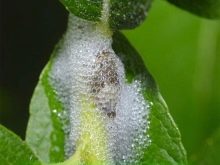
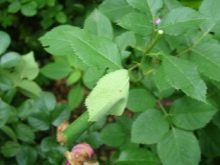
The most common diseases of the rose are the following.
- Powdery mildew, a sign of which is the appearance of a white bloom on the leaves and stems. With such signs, you need to immediately spray the plant with preparations "Topaz", "Chistotsvet", "Fundazol".
- Rust. Rust-affected stems become bent and thick. Then an orange bloom appears on the root collar and near the buds, and on the inside of the leaf - orange swellings, which subsequently turn black. Treatment consists in timely pruning of diseased branches and spraying them after the opening of the buds with 1% Bordeaux liquid or means "Oxyhom", "Hom", "Abiga-Peak".
- Black spot leaves are characterized by the appearance of dark brown spots. The leaves turn brown and fall off. The fight against this disease consists in spraying the bush with copper-containing preparations or "Skor", as well as in the collection and destruction of diseased leaves.



The temptation to grow this wonderful green beauty in the garden is great. However, it will be difficult for novice growers to do this due to the complex care of the bush. It makes sense to first master the cultivation of ordinary classic varieties of roses, and only then, after gaining experience, your labors can be crowned with success.
In the next video you can take a look at the Green Tea rose.

































































































The comment was sent successfully.